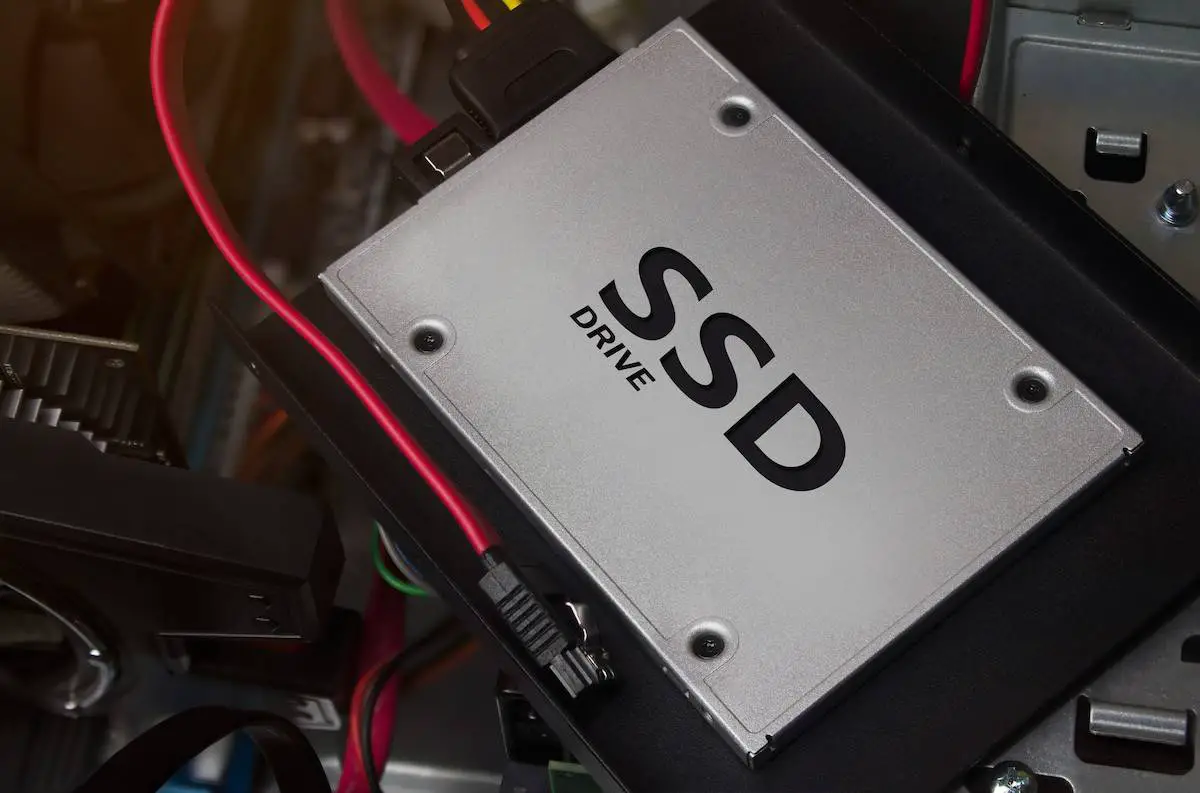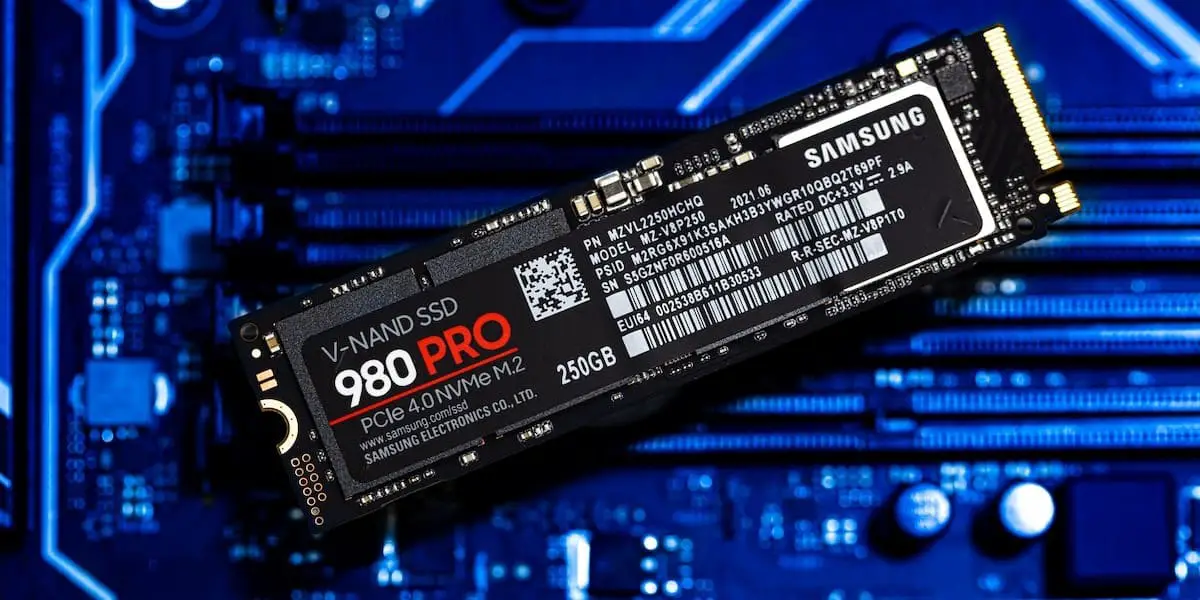You may have bought a brand new SSD for your computer, expecting a better performance, but you need to ensure it won’t be overfilled and cause you to end up right where you started. A quick Google search would tell you that you need to leave some free space on your SSD so that your computer performs well, but is that a myth? If not, how much free space do you need to leave on your SSD?
It is recommended that you leave between 10 and 20 percent of the SSD space free to ensure your computer’s optimal performance. The SSD needs it for wear leveling so that the drive doesn’t get damaged. To free space on your SSD you can try uninstalling programs or deleting hidden files.
If you still have questions, read the rest of this article. I will explain what happens if you don’t leave free space on your SSD and how SSDs use wear leveling techniques. Moreover, you can learn more about different ways of freeing space and calculating how much capacity should be saved for the SSD to perform tasks.
What Happens When You Fill Your SSD?
There has been a lot of discussion about the amount of free space you should leave on your solid-state drive; some even question if it should be done at all. To understand why this rule exists in the first place, you need to know what happens if you completely disregard it.
If your SSD is entirely full, you’ll be able to tell. The performance of your computer will drop significantly, and there are several signs that will show you it’s time to free some space:
- The computer will require much longer to boot
- The computer may struggle to perform even simple tasks.
- Programs may freeze once in a while, taking a lot of time for every task.
- The infamous blue or black screen may appear, alerting you that something has gone wrong.
Because the drive is full, you may not be able to update your operating system anymore. You may not be able to install any new programs or even store files that have a larger size than usual. When the SSD is full, your computer can barely function. Moreover, the life expectancy of your drive gets shorter the longer it goes like this.
Why a Full SSD Causes Performance Issues
You need free space for your computer to perform well because the SSD uses a type of flash memory that gets damaged every time it’s used. To prevent certain sections of the SSD from getting heavily damaged, the SSD shuffles data using wear leveling, which requires free space.
If there is no space left, wear leveling won’t work, resulting in parts of the SSD getting damaged irreversibly. This affects the longevity of the SSD in addition to the speed of your computer. To avoid this scenario, you must ensure the SSD won’t be completely full.
Freeing Space on Your SSD
Generally, it’s not very easy to fill the SSD. Most computer users don’t have to worry about this particular problem if they don’t deal with any particularly complex programs or games. However, if there’s a chance of you filling the SSD and making your computer essentially useless, it’s essential to be aware of the problem.
You may try some solutions that can free the SSD up, as I explain below, but it’s always better not to end up in a situation where you’re scrambling to get your computer back in shape. To prevent your SSD from filling, you need to be aware of how much SSD space you’re using and how much you’re supposed to leave untouched.
There’s no rule set in stone for the amount of free space that you should leave on your SSD, but there are commonly accepted rules by users and specialists. Most say that you should leave between 10 and 20 percent of free space. Anything less than that can start causing serious problems.

Why the 20% Rule?
The 20% rule is a provision for users to ensure they don’t overwhelm their computer and the SSD lasts longer. It makes you keep an eye on how you’re using the SSD space and avoid unnecessary or overly large programs that could have an impact on your drive.
Basically, the 20% rule exists as a recommendation, but it isn’t the universal truth for all drivers and computers out there. This is why you may read that some believe that this percentage should go down to 15 or 10. With the newest models, chances are you’ll hear that SSDs function perfectly fine, even at 90% capacity.
Just because these rules aren’t set in stone, and there’s not a fixed percentage to keep, doesn’t mean that it’s a myth. SSDs need 10 or 20 percent of their capacity to function. This space is required for speed and for performing different operations. Most SSDs have a certain percentage of the storage reserved for these purposes, and you can even change it to fit your preferences.
Therefore, even if you’d want to, you couldn’t fill your SSD so quickly because parts of its capacity are “hidden” from you so that the SSD can use them to function correctly. However, the closer you get to fill up the rest of the capacity, the worse your computer will perform.
Does More Free Space Mean More Speed?
As I explained, most specialists and users agree that you should leave a certain percentage of the capacity of your SSD to make sure that your SSD will last longer and that your computer will function normally. That percentage is low, and some of it might not be available to you even if you wanted it.
However, you might be looking for more than average performance. You may want your computer to run as fast and smoothly as possible. Since 10 percent of free space on your SSD can keep the computer from slowing down, would more free space mean a better-than-average performance?
Again, there are no right or wrong answers, given that there are so many different types of SSDs that you can find. However, some users agree that there is a difference between your computer’s performance with 10 percent of the SSD free versus 30 percent free.
How To Calculate the Free Space You Need
Let’s assume your computer is using a 250 GB drive. If you aim to leave 20 percent of it untouched, 250 x 0.20 = 50 GB should be free space on your SSD. This means that you have 200 GB to use as you please. If you want to be more cautious and leave 25 percent, calculate 250 x 0.25 = 62.5 GB of free space.
If you want to know how much free space you want to reserve for the SSD as overprovisioning, you should calculate it to be around 3 to 10 percent of the capacity of the SSD. So, if you’ve got a 250 GB drive, this reserved space should include between 7.5 and 25 GB storage space.
How Do I Free Space on My SSD?
Let’s assume you didn’t know about the provision, and your SSD didn’t have any reserved space, so you’ve filled more than 90 percent of your SSD. Understandably, your computer is not doing so well. Is there any way out of this?
There are several things you could try to free some space and allow your SSD to perform important tasks:
- Uninstall programs. If there are any programs in your computer that are taking up too much space and are not necessary for you, find them and then uninstall them. Here’s how you can uninstall a program on Windows or Mac.
- Empty the recycle bin. It’s possible that your recycle bin is full. Everything you delete is usually stored in the bin unless you specifically delete it. Empty it, restart your computer and see if it makes a difference in the way your computer performs.
- Disable backups. Your laptop has files where it backs up information every time your computer turns on. You may disable this file to save some space, but this is a very temporary solution.
- Delete hidden folders. There may be hidden folders on your computer, and you haven’t thought to see what they are. You have ways of finding them, and if they are of no use to you, you can delete or move them in order to free up SSD space.
What About M.2 SSDs?
M.2 SSDs are smaller SSD form factors that are faster and more expensive than traditional SSDs. They are suitable for dealing with complex programs like animation or video editing. Most gaming PCs or laptops already use them because they improve performance significantly. You can use them as external drives using USB-C ports.

The same logic applies to M.2 SSD regarding free space: it’s recommended to leave some free space to ensure the computer will perform well. In general, for these newer drives, the percentage of space that should be free is closer to 10 than 20 percent. However, the more space you can leave for the SSD to perform tasks, the better.
Conclusion
An SSD needs free space for wear leveling; this means that the memory wears out every time it’s written to, so it needs room to shuffle data so that no significant damage is done to the drive.
Usually, it’s recommended that you leave around 20 percent free capacity on your SSD, but with modern drives, you can get closer to 10 percent with no problem. If you want to free space on your SSD, you can try deleting programs, emptying your recycle bin, or deleting hidden files.
